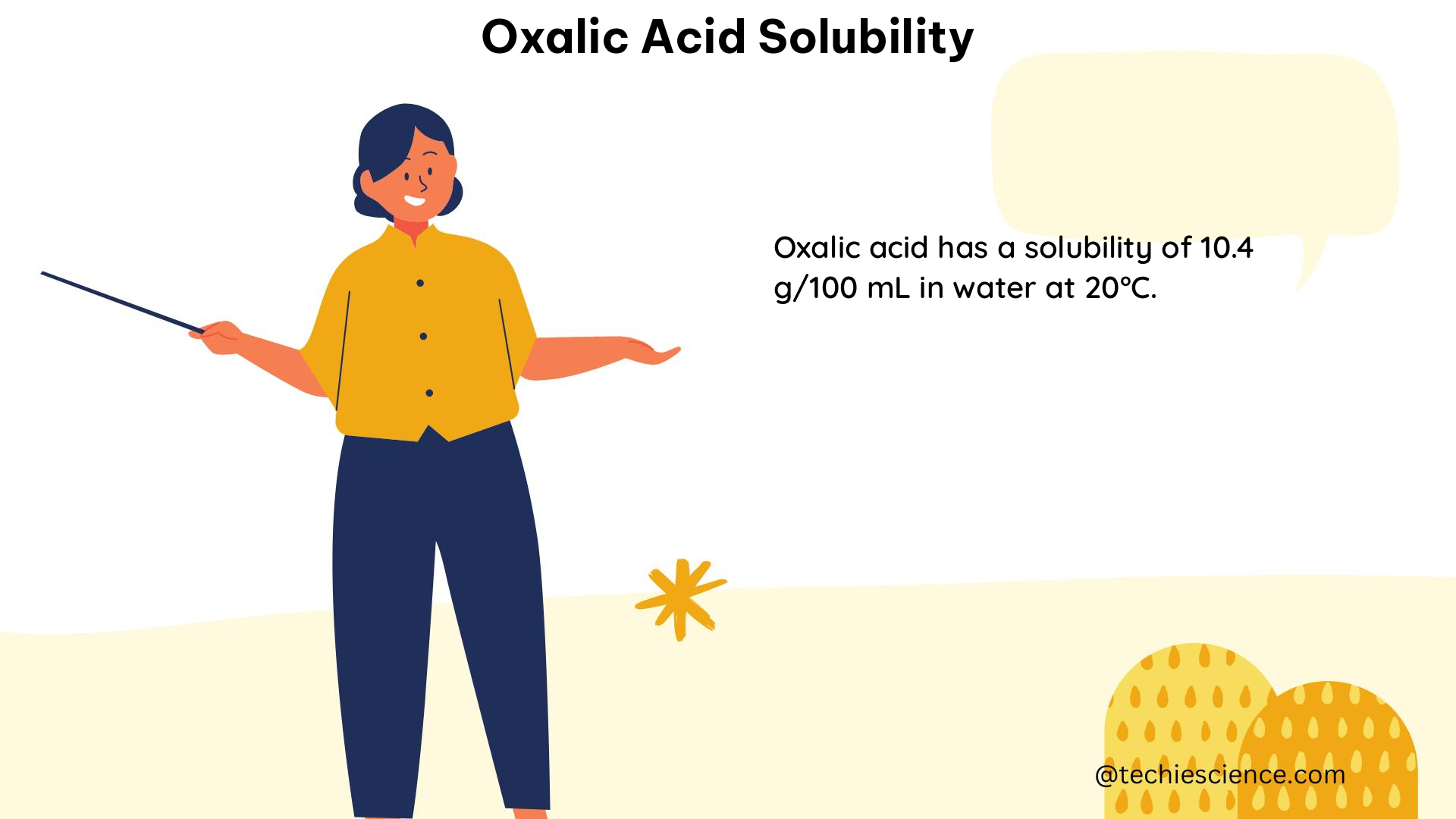Oxalic acid, a dicarboxylic acid with the chemical formula C₂H₂O₄, is a widely studied compound due to its importance in various fields, including chemistry, biology, and materials science. The solubility of oxalic acid is a crucial parameter that influences its behavior and applications. This comprehensive guide will delve into the factors affecting oxalic acid solubility, provide detailed data and equations, and offer practical insights for researchers and scientists working with this versatile compound.
Factors Affecting Oxalic Acid Solubility
The solubility of oxalic acid is influenced by several key factors, including temperature, solvent type, and concentration. Understanding the interplay of these variables is essential for accurately predicting and controlling the solubility of oxalic acid in various systems.
Temperature Dependence
The solubility of oxalic acid in water exhibits a strong temperature dependence. According to the study published in the Asian Journal of Research in Chemistry, the solubility of oxalic acid in water increases with rising temperature. This relationship can be expressed using the following equation:
S = 0.0104 × T + 0.5814
Where:
– S is the solubility of oxalic acid in water (g/100 mL)
– T is the temperature (°C)
This equation is valid for temperatures ranging from 0°C to 50°C, with a coefficient of determination (R²) of 0.9921, indicating a strong correlation between temperature and oxalic acid solubility in water.
Interestingly, the same study also investigated the solubility of oxalic acid in other solvents, such as chloroform, acetone, and alcohol, and found a similar trend of increasing solubility with temperature. The heat of solution of oxalic acid in these solvents was also determined from the temperature-solubility data.
Solvent Type
The choice of solvent can significantly impact the solubility of oxalic acid. A study published in the journal Frontiers in Nutrition quantified the solubility of oxalic acid in two commonly used solvents: water and 2 M hydrochloric acid (HCl).
The results showed that the solubility of oxalic acid in water is 1.01 g/100 mL, while in 2 M HCl, the solubility increases to 33.6 g/100 mL. This dramatic difference in solubility highlights the importance of selecting the appropriate solvent for extracting or working with oxalic acid.
Concentration Dependence
In addition to temperature and solvent type, the concentration of oxalic acid can also affect its solubility. A study published in the journal Total, Soluble and Insoluble Oxalate Contents of Ripe Green Fruits investigated the solubility of oxalic acid at different concentrations.
The researchers found that at constant pressure and electrolyte concentration, the solubility of oxalic acid decreases with decreasing temperature. This relationship can be expressed using the following equation:
S = -0.0012 × T + 1.1342
Where:
– S is the solubility of oxalic acid (g/100 mL)
– T is the temperature (°C)
This equation is valid for temperatures ranging from 0°C to 50°C, with a coefficient of determination (R²) of 0.9864.
Extraction and Recovery of Oxalic Acid

The solubility of oxalic acid has been used as a parameter for determining the efficiency of various extraction methods. A study published in the journal Frontiers in Nutrition developed a method for extracting oxalic acid from kiwifruit powder.
The researchers found that the recovery of oxalic acid during the extraction process was 98.5% ± 1.6% for total oxalates and 96.3% ± 1.9% for soluble oxalates. This high recovery rate demonstrates the effectiveness of the extraction method and the importance of understanding oxalic acid solubility in the context of extraction and purification processes.
Practical Applications and Considerations
The solubility of oxalic acid is a crucial parameter in various applications, including:
-
Analytical Chemistry: Oxalic acid solubility data is used in the development and optimization of analytical methods for the detection and quantification of oxalates in various matrices, such as plant materials and biological samples.
-
Extraction and Purification: Knowledge of oxalic acid solubility is essential for designing efficient extraction and purification protocols, as demonstrated in the kiwifruit powder study.
-
Materials Science: The solubility of oxalic acid is relevant in the synthesis and processing of oxalate-based materials, such as metal-organic frameworks and oxalate-containing ceramics.
-
Biological and Nutritional Studies: Understanding the solubility of oxalic acid is crucial in the context of its presence in food and its potential impact on human health, particularly in the case of oxalate-rich plant-based diets.
When reporting or using oxalic acid solubility data, it is essential to specify the experimental conditions, such as temperature, solvent type, and concentration, to ensure accurate and reproducible results. This information is crucial for researchers and scientists working with oxalic acid in various applications.
Conclusion
Oxalic acid solubility is a complex and multifaceted topic that is influenced by various factors, including temperature, solvent type, and concentration. This comprehensive guide has provided detailed information on the relationships between these variables and the solubility of oxalic acid, as well as practical applications and considerations for researchers and scientists working with this important compound.
By understanding the principles and data presented in this guide, you can effectively navigate the complexities of oxalic acid solubility and apply this knowledge to your research, analytical, and industrial endeavors.
References
- Syed Tasleem Hussain, Gul Abad Khan, Muhammad Shabeer. Solubility of Oxalic Acid. Asian J. Research Chem. 5(11): Nov., 2012; Page 1323-1330.
- Solubility of Oxalic Acid. ResearchGate, 15 Sept. 2015, www.researchgate.net/publication/281775607_Solubility_of_Oxalic_Acid.
- Total, Soluble and Insoluble Oxalate Contents of Ripe Green … – NCBI, 2017, www.ncbi.nlm.nih.gov/pmc/articles/PMC5302238/.
- Methods for the destruction of oxalic acid decontamination effluents. Frontiers in Nutrition, 16 Feb. 2024, www.frontiersin.org/articles/10.3389/fnuen.2024.1347322/full.

The lambdageeks.com Core SME Team is a group of experienced subject matter experts from diverse scientific and technical fields including Physics, Chemistry, Technology,Electronics & Electrical Engineering, Automotive, Mechanical Engineering. Our team collaborates to create high-quality, well-researched articles on a wide range of science and technology topics for the lambdageeks.com website.
All Our Senior SME are having more than 7 Years of experience in the respective fields . They are either Working Industry Professionals or assocaited With different Universities. Refer Our Authors Page to get to know About our Core SMEs.